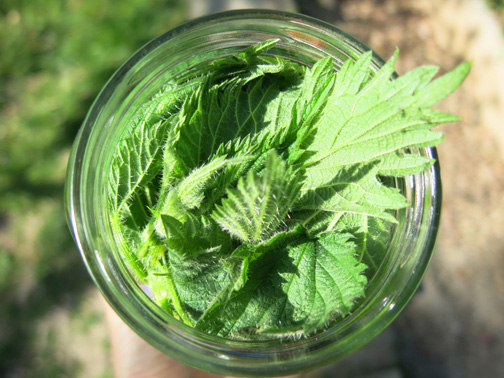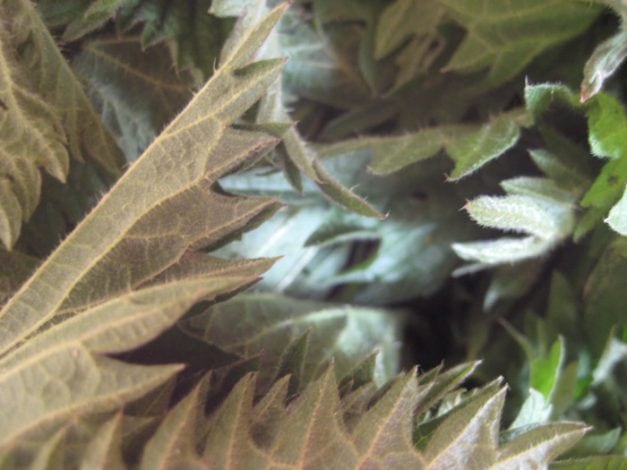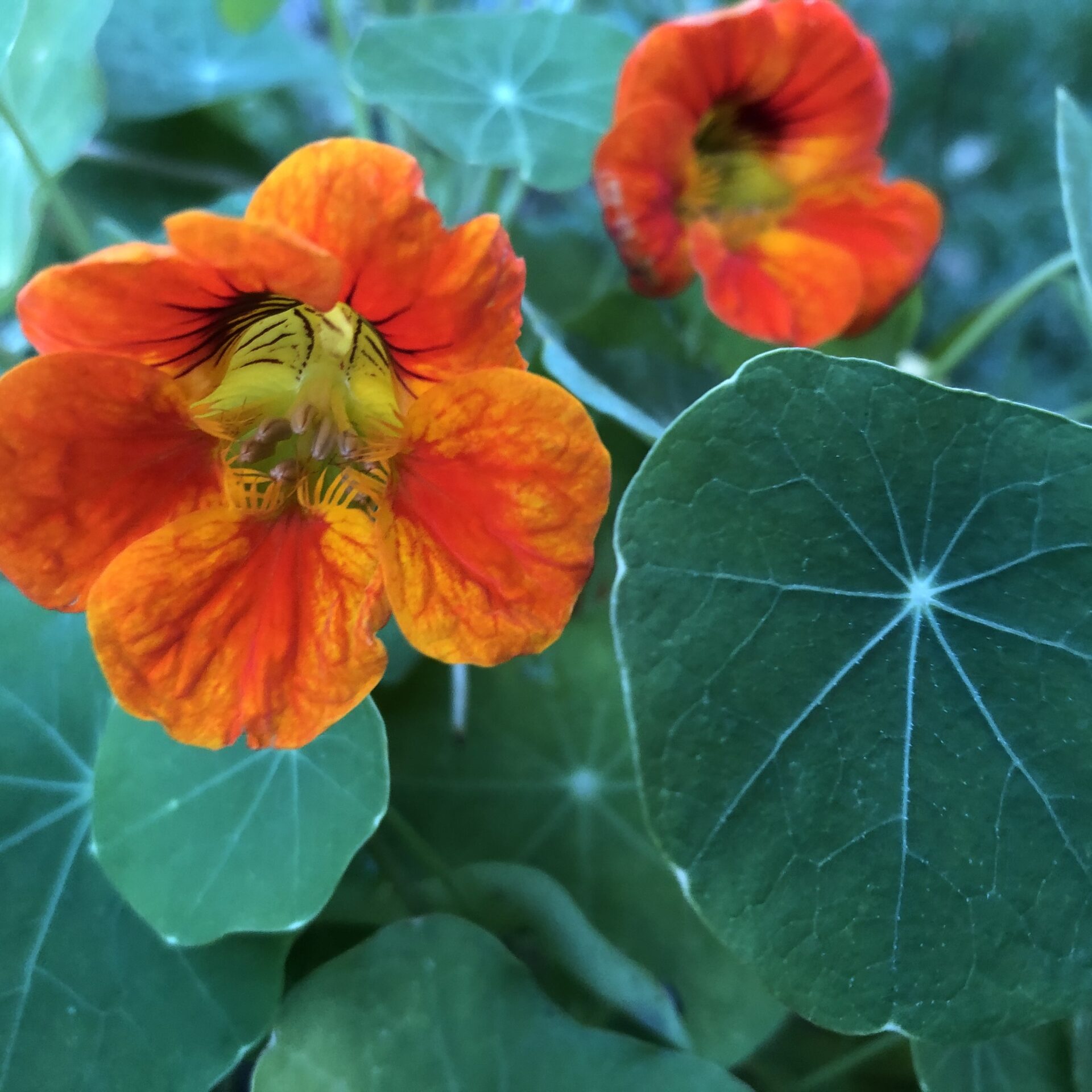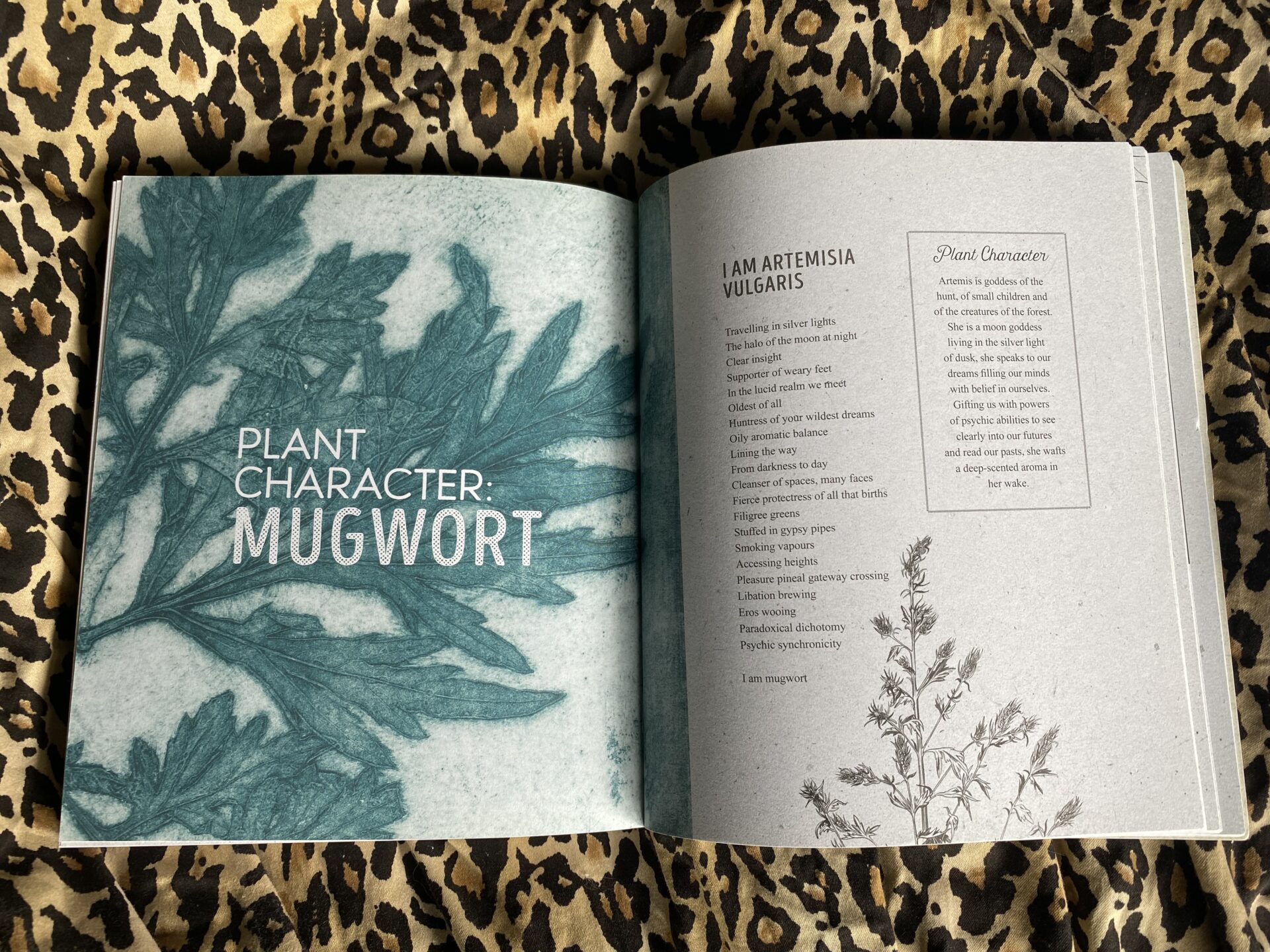The common and ubiquitous stinging Nettle is one of the most easily recognisable plants – and if you are in any doubt, just brush your fingertips over the familiar warrior herb and you will know for sure! As the buzz and heat of the sting kisses your fingers, a chemical cocktail begins to course through your blood. But, there are many health benefits of nettle leaves.
These enlivening compounds were once thought to be simply formic acid (the same chemical in ant’s bites). However, now we know that they are far more complex array of differing phytonutrients.

Origins of their name and getting stung
Noedl is thought to be the root of the word nettle from Anglo-Saxon meaning needle. The tough stems and undersides of the stinging nettle leaves are densely packed with the protective tiny, hollow hairs (trichomes). The stings are in fact tiny hollow needles full of various compounds waiting to enter into the layers of your skin on contact. They are like small hypodermic syringes that contain a multitude of chemicals. These include formic acid but also the neuro-transmitters serotonin, histamine, and acetylcholine. When you touch the leaves, the cocktail is released causing the familiar and much feared sting.
The Latin name is Urtica dioica probably deriving from the Latin ‘uro’ meaning ‘I burn’. The sting really does burn. Later, when the area gets wet, in the shower for example, the area will light up with sensation again.
Fear and fire
Nettles bring out a certain element of fear in people. We have all been stung at some point and not that many of us really enjoy pain. Nettle is warrior packed with Martian energy (it’s ruled by the planet Mars), full force of action and protection. This incredible plant supports our renal systems in particular the kidneys and gifts an opportunity to explore the emotion of fear, helping us to face uncertainties with strength. Nettles can encourage the element of fire in a person, aiding in the breakup of excessive or waterlogged emotions.
The nettles are protective armies, surrounding our gardens, meadows and woodlands. One of the first herbs to appear in early Spring, like nettle soldiers of the earth. They are protected with their acidic spines.
Antidote
Nettles are well known to grow near their antidote, the common dock leaf and this is often our first encounter with folklore as a child.
One possible explanation of why these are effective is that the dock leaf juice evaporating from the skin may have a surface cooling effect on the burning sensation. When there hasn’t been dock leaves available, we have also found the cooling dandelion leaf to be effective in soothing the area.
Medicinal Power
Nicholas Culpepper the famous 16th century English herbalist; tells us Nettle…
“is hot and dry, and you know as well that winter is cold and moist; then you may know as well the reason why nettle-tops eaten in the spring consume the phlegmatic superfluities in the body of man, that the coldness and moistness of winter hath left behind”
Here are five health benefits of nettle leaves – this wonderfully powerful common weed.
- Kidney support – Interestingly, Nettle leaf is a diuretic acting to support kidney function, flushing through water. The flowing, changeable nature of water connects water with emotion. Water flows around things but can be tumultuous. Additionally, people fear nettles and their sting; a sting which, as we’ll see is long revered for its healing properties. In global wisdom medicinal traditions, the pair organ of the kidneys are also linked with the emotion of fear.
- Anti-inflammatory – Nettles were used by Roman soldiers as whips which induce an inflammatory reaction, relaxing tired muscles and aching joints. We have seen this heroic form of herbalism work amazingly in cases of osteoarthritis. Literally, stinging frozen knee joints resulting is much looser freer movement and decrease pain.
Anti-inflammatory for reactivity – In cases of hay fever and other histamine reactions, nettle stings anywhere on the body will alleviate symptoms and drinking dried nettles or freshly picked nettles in tea will support restoring the body to balance.
- Anti-itch (Skin) – Nettles are heating and drying to the body, hence ruled by Mars, helping with eczema, dermatitis, rhinitis, basically anywhere there is inflammation and heat. This is not recommended for long term as a simple (just using nettles on their own) use in a hot condition as it can dry and overheat the system. Therefore, we blend the herb with other more moistening or cooling plants to create a balanced mix.
- Nutrient-rich nourishment – Nettles are a rich source of iron and many other minerals. The leaves have a distinctly fishy, sea-weedy smell and taste. Super nourishing for the blood this interaction in the body is called an Alterative. Nettle’s iron content makes it a wonderful blood builder, and the presence of Vitamin C aids in the iron absorption.
As a herb rich in iron nettles are excellent for anaemia (see Iron Deficient Anaemia profile below). and fatigue, especially in women. They promote the process of protein transamination in the liver, effectively utilising digested proteins, while simultaneously preventing them from being discharged through the body as waste products. Because of its many nutrients, stinging nettle is traditionally used as a spring tonic. It is a slow-acting nutritive herb that gently cleanses the body of metabolic wastes.
- Blood support – Nettles are chlorophyl-rich. Chlorophyl, assists in converting sunlight to energy for the plant and mycelium at the roots. The more shaded the are the nettles grow in, the more chlorophyl-rich they are. Chlorophyl chemically akin to haemoglobin, the carrier of oxygen in our blood. This makes nettle excellent for building up the blood as well as its iron-richness.double blood-builde
It’s one of the safest alternative (altering to improve health) or blood purifying herbs, helping the body restore optimal functioning by aiding metabolic processes, especially the elimination of waste products. It aids the body to do this by stimulating the kidneys helping the body to eliminate bacteria and other toxins especially in the treatment of chronic disorders that require long-term treatment. It has a gentle, stimulating effect on the lymphatic system, enhancing the excretion of wastes through the kidneys.

Another herbalist’s perspective
Our wonderful friend and fellow herbalist Nikki Darrel over in Ireland has dug out some super helpful information – in her own words
‘The humble but mighty nettle might now get the recognition it deserves as it has been shown to contain a plant lectin which prevents viral replication – so it is a good time to make nettle soup and nettle pesto and drink nettle tea or gargle with it.’
See this paper linked for detailed information.
Sensory Herb Apprentice’s perspective
The lovely and super clever Annalise (Sensory Herbalist extraordinaire) has written a comprehensive Monograph on Nettles here.
Harnessing the power of nettles
With all of this in mind, nettles are a great addition to any spring herbal tea, juice or soup. The leaves have a distinctly fishy, sea-weedy taste to them, almost a crystalline crunch. All those rich minerals, flooding our mouths with familiar flavours. Being nourished in spring is something the whole family can do through using all the spring green herbs in daily meals. Getting everyone together with gloves and scissors to harvest the nettles and help prepare a soup makes it fun and the soup is always tasty.
See our Spring Kitchen Witching’ Eguide for more nettle recipes and their versatile health benefits….
Iron Deficient Anaemia Profile
Nettles are also a specific wonderful remedy for Iron Deficient Anaemia
Symptoms include
- feeling really tired
- dizziness
- heart pounding in my chest (palpitations)
Iron deficiency is common a condition in which blood lacks adequate healthy red blood cells. Red blood cells carry oxygen to the body’s tissues, giving your body energy and your skin a rosy colour.
As the name implies, iron deficiency anaemia is due to insufficient iron, which is carried on the red blood cells. Without enough iron, your body can’t produce enough haemoglobin, a substance in red blood cells that enables them to carry oxygen. As a result, iron deficiency anaemia may leave you tired, weak and pale, dizzy and feeling palpitations.
Iron is in extra demand during times of cell division so during pregnancy and rapid periods of childhood growth, it’s easier to get anaemic. Iron deficiency is also more common in women who eat a diet low in iron and have really heavy periods.




